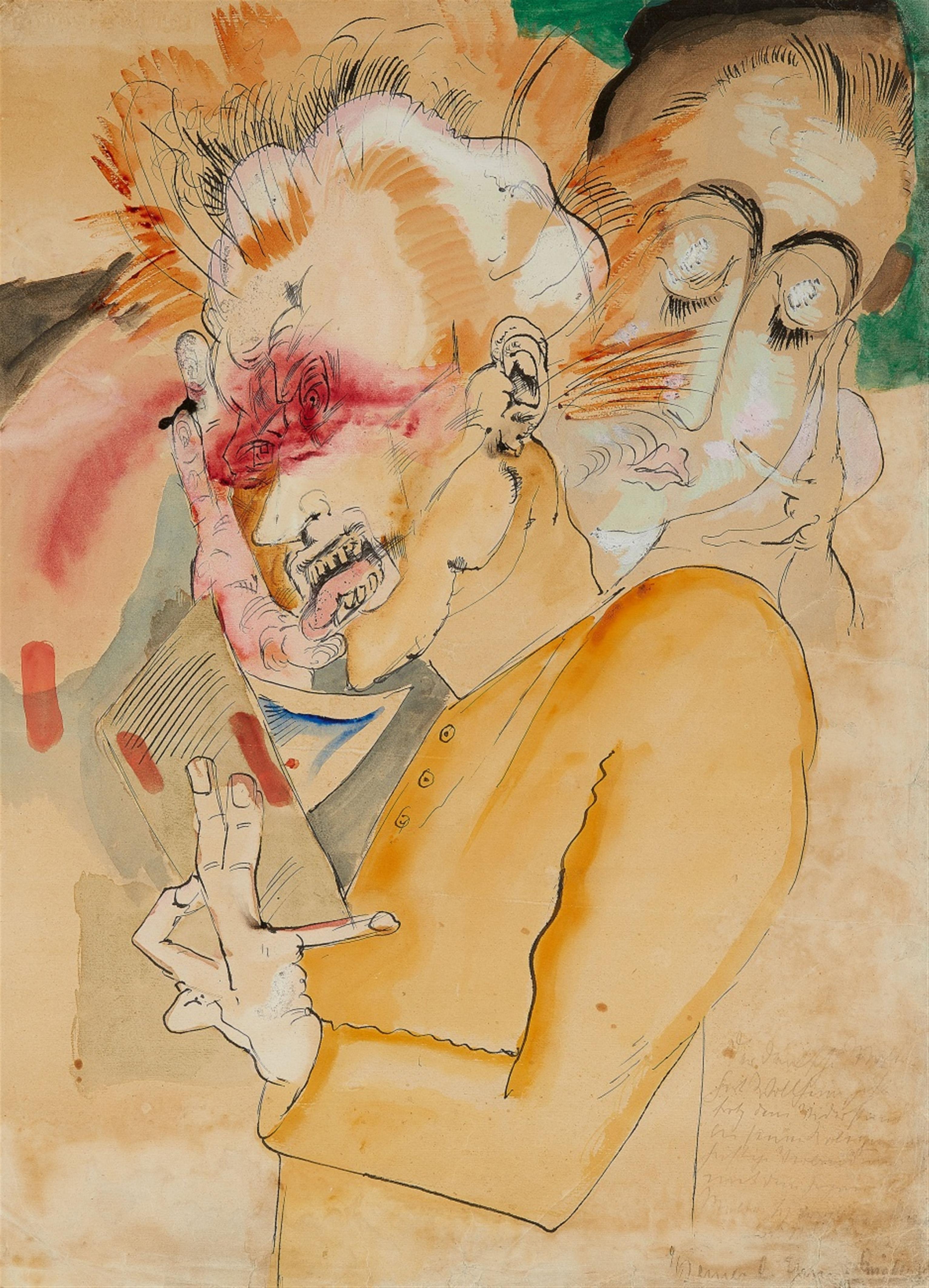Gert Heinrich Wollheim
Selbstportrait mit Braut
1921
Watercolour, reddish and white bodycolour and India ink on laid paper with watermark "LOTOS-BÜTTEN" 67.4 x 49.3 cm Framed under glass. Inscribed (partially difficult to decipher) 'Der deutsche Maler/ Gert Wollheim geht/ trotz dem Widerstand/ aus seinem Kollegen[kreis]/ geistige Verbindung/ mit dem Jungen [Rheinland bei] Mutter Ey [ein]' in Sütterlin script in pencil lower right. Below, a handwritten dedication 'Meiner l. Emma Quedenfeldt' by Johanna Ey in pencil. - Professionally restored age-related defects; slightly irregularly browned and with old studio traces and moisture stains.
Wollheim's important watercolour self-portrait from the estate of the photographer Dr Erwin Quedenfeldt (1869-1948) features a dedication written by Johanna Ey to his wife, Emma Quedenfeldt. Erwin Quedenfeldt was a key figure in the Düsseldorf scene of 1919/1920. The “Aktivistenbund 1919” had been founded at his house: this group of leftist writers, intellectuals and artists also had connections to Cologne as well as to “Stupid” and Franz Wilhelm Seiwert. The avant-garde journal “Aktivistenbund 1919” was also founded at Quedenfeldt's home in 1920 - in it “Gert H. Wollheim championed the reformulation of the artist's task in society with anarchic verve” (Dirk Teuber, Gert H. Wollheim und Max Ernst, in: Stephan von Wiese, Gert H. Wollheim: Monographie und Werkverzeichnis, Köln 1993, p. 26).
In the work here, Wollheim presents himself as correspondingly combative, directly fierce in his declamation. Behind him we discover a thoughtfully listening Johanna Ey(?) - the image does, after all, bear her soft and rounded features. In the rooms of her gallery, in the legendary “Ey” in the Hindenburgwall in Düsseldorf, a turbulent and subsequently famous mob had gathered on 9 July 1920, when the agitating artist held a fiery speech directed against the academy and reactionary artists. Max Ernst is also supposed to have been in the audience that day; he subsequently belonged to the circle surrounding “Mother Ey” and exhibited his work there in 1921. The influences and impulses in this period were diverse and some artistic developments seemed to run parallel for a short time, so that particularly with regard to the significance of “Dadamax” for Düsseldorf, we could speak of a “proto-Surrealism” in the case of Wollheim, without it being possible to directly document a personal connection.
Provenance
From the estate of Erwin Quedenfeldt; Galerie Remmert und Barth, Düsseldorf; Private collection, North Rhine-Westphalia
Exhibitions
Bonn 2000 (August Macke Haus), Gert H. Wollheim. Phantast und Rebell, cat. no. 27, p. 97 with colour illus.

